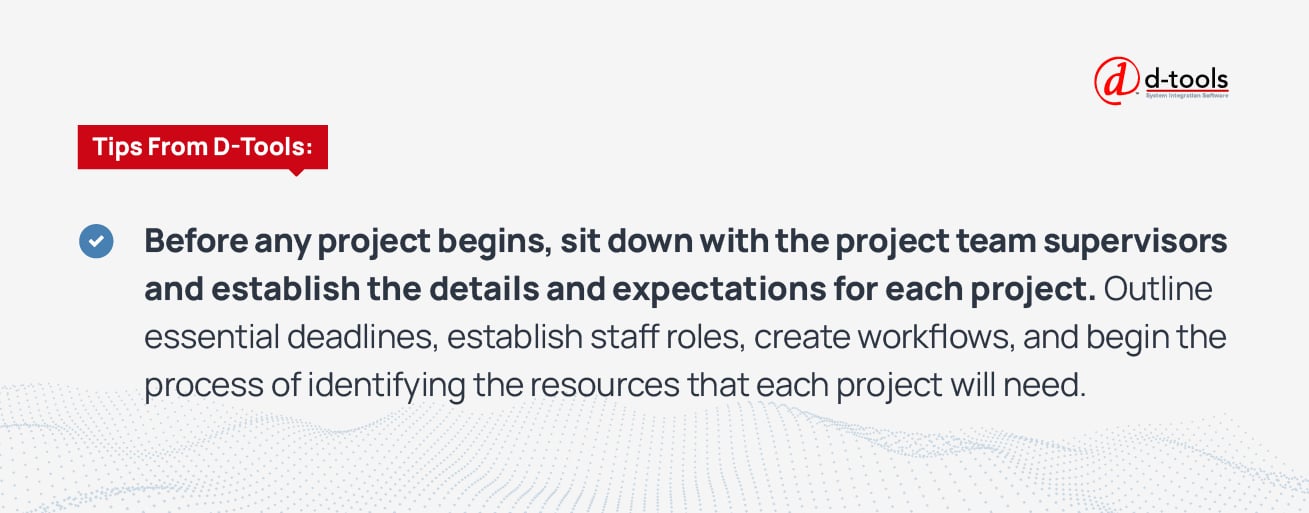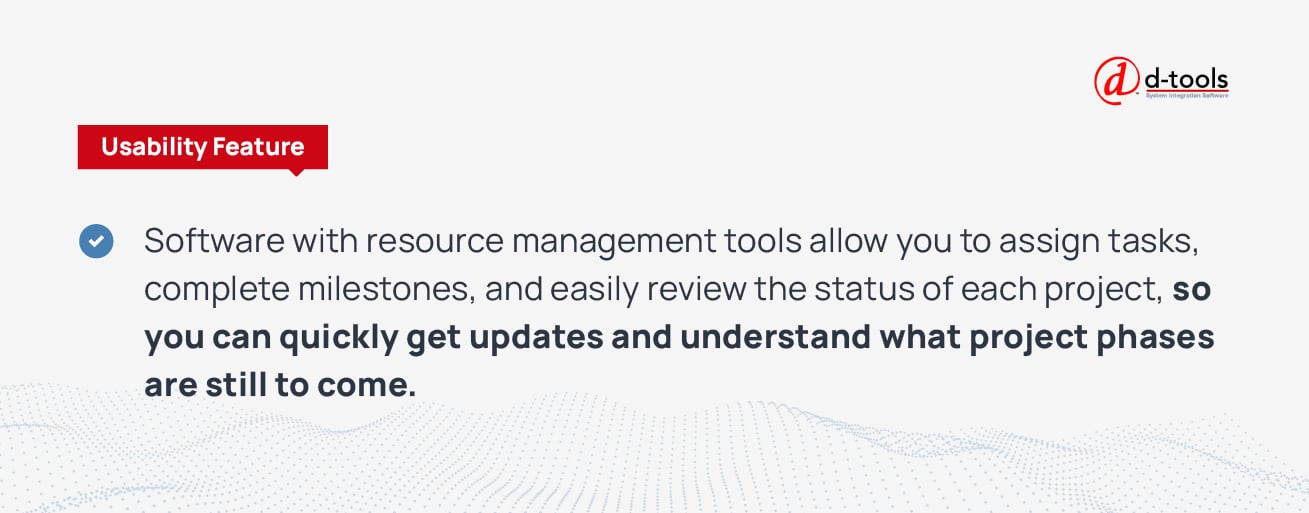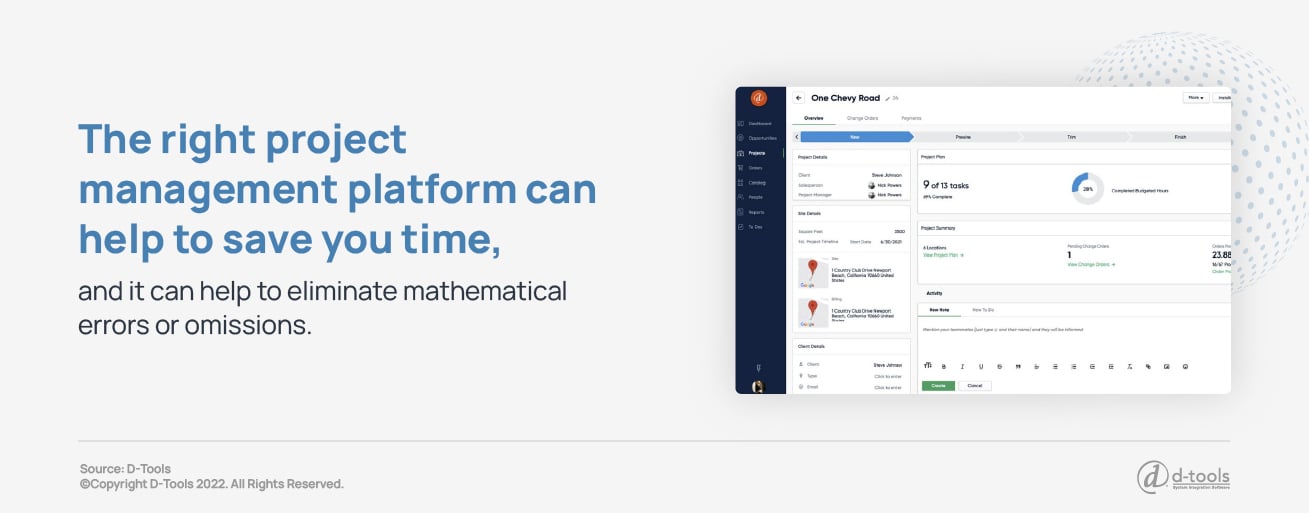Project resource management is an essential element that contributes to a project’s success. Resource management is a naturally complex task, especially on larger-scale projects that depend on multiple types of resources. But when you’re managing a team or program, chances are that you’ll have multiple projects occurring simultaneously, and tracking resources across those projects can quickly become challenging.
Fortunately, there are multiple steps you can take to effectively schedule multiple projects and manage their resources.
10 Tips on How to Manage Resources Across Multiple Projects
Whether you’re looking to improve your resource management practices or preparing for your first round of simultaneous projects, these tips can help you successfully navigate multiple projects.

1. Define Details and Expectations for Each Project
Before any project begins, it’s important to sit down with the project team supervisors and establish the details and expectations for each project. During this time, outline essential deadlines, establish staff roles, create workflows, and begin identifying the resources that each project will need.
It may be tempting to use the information for one project as a template for another, but this can be a mistake, unless the projects are nearly identical. When developing staff roles, timelines, and workflows, it’s important to consider the goals and nuances of each project.
Establishing these details can be very time-consuming, but the process of getting this information will often generate questions and conversations. Through those conversations, you’ll start solving potential problems early on. These conversations also ensure that your whole team understands the project and is working off of the same details.
2. Be Prepared to Prevent Scope Creep
Having your detailed project plans, deadlines, and expectations in place is important for another reason: It can help to prevent scope creep. During a project, it’s common for team members or leaders to propose changes to deliverables or processes. These changes may be well-intended, but they can have significant implications on the project’s resources.
For example, increasing the scope of one project could require more staff time. If those same staff are simultaneously working on another project, you’ll be facing resource challenges for both projects, which could negatively impact the success of both.
With project plans and expectations written down, and appropriate resources identified, you can show how a scope change can impact all of the projects involved. You can also use those documents to provide potential solutions, allowing scope changes but preventing negative impacts.
>> Related Read: AV Statement of Work vs. Scope of Work: What’s the Difference?
3. Determine Project Priorities
Your project priorities also factor into how to schedule multiple projects. For example, you might have several projects with similar deadlines. If those projects involve the same staff, it’s best to schedule them, so there’s at least some time between deadlines. To accomplish this, you’ll need to determine which project has the highest priority.
Multiple factors contribute to a project’s priority, and this may be a discussion that you need to have with upper-level management or leaders of your department. This can be one of the trickiest elements of managing multiple projects, especially if you’ll be sharing resources across them. Establishing a method for prioritizing the projects will ultimately make resource scheduling easier, though.
4. Plan for the Busiest Times
In a perfect world, you would be able to organize your projects so they don’t occur simultaneously, allowing staff to entirely focus on one project before moving on to the next. Such an arraignment can benefit staff productivity and makes your resource management easier, but it’s not always possible.
Your projects may have peak demand times that coincide and overlap with each other. During those peak demand times, projects require more resources - usually, staff time - than normal. When you have these peak demand times simultaneously, resource management becomes significantly challenging.
As you plan and prioritize your projects, pay attention to these peak demand times and when they’re likely to fall. You’ll need to plan well ahead to support these periods when they occur simultaneously. Your planning might mean ordering supplies ahead of time, bringing on additional staff temporarily to help with the projects, or even altering the schedule of one of the projects to keep these peak demand times from syncing up. The more time you have to plan for these incidents, the smoother the process should ultimately be.
>> Related Read: The Ultimate Guide to Project Management
5. Establish a Way to Track Project Progress
You can only effectively manage resources if you know each project’s progress. Establishing to-dos, deadlines, and milestones can help you gauge progress, but you need a way to track these elements.

Some teams rely on team tracking apps, but these can lack functionality and can add on the number of platforms that you’re already using. A better solution is to use designated project management software capable of tracking progress, and other essential elements like staff time tracking and item tracking. Look for software with resource management tools that allow you to assign tasks, complete milestones, and easily review the status of each project, so you can quickly get updates and understand what project phases are still to come.
6. Stay on Top of Staff Time Utilization
Staff time is one of the key resources required for any project. It can also be one of the most difficult resources to manage, especially if you have staff working on multiple projects.
Implementing digital time tracking can help to simplify this task. Staff track their time and identify the hours spent on each project, and that data is automatically uploaded to your management views in your project management software. If you have staff submit their time weekly, you’ll have updated data and can quickly identify if staff utilization is over or under where it should ideally be. The sooner you identify potential issues, the more quickly you can take steps to fix them.
Digital time tracking can also help you identify if staff workloads are appropriate, especially if project scope is changing or you’re trying to balance multiple high-priority projects.
But, remember that hour trackers only provide you with so much information. Don’t hesitate to speak with team leaders and staff about how they’re handling their workload and any upcoming deadlines that they’re concerned about. This personal connection can be valuable, and it may alert you to issues that aren’t captured in time tracking data.
>> Related Read: Solve the Field Service Scheduling Conundrum (Finally!)
7. Establish a Way to Track Non-Staff-Time Resources
In addition to tracking staff time, it’s also important to establish a way to track other resources, like finances or physical objects and inventory. This tracking needs to be a continuous process throughout the entire project, and it also needs to be a process that you keep up-to-date for every project.
Balancing your resource tracking with the project progress will validate whether your resources are being used appropriately, or if you might need to make changes.

When you’re working with multiple projects, the only way to effectively track resources is with a project management platform. The right platform can save you so much time, and it can help to eliminate mathematical errors or omissions.
Look for a platform that you can easily tailor to reflect each program’s resources. You should process the data in multiple ways, quickly make entries and changes, and also generate and customize reports to your needs.
8. Implement Clear Communication Strategies
Effective communication is essential when managing project resources. Having an open line of communication within teams and across your entire organization can alert you to potential issues, and can make it easier for you to collaborate with staff and share important messaging about resources.
Project management software can help to facilitate that communication. Options like in-app messaging and message boards offer a way to quickly reach staff. Email can also be useful, as are phone calls and team meetings.
In addition to establishing these modes of communication, you may need to establish communication policies. Part of effective communication within an organization starts with knowing who to approach about questions or issues. You might want to make a communication policy document for each project that you’re working on, which can save you time and frustration when trying to connect with the right person.
>> Related Read: Action Plan for Improving Team Effectiveness
9. Use Previous Project Data as Templates
If your company consistently works on similar projects, like multiple product launches or marketing campaigns, you can use the work performed for one project as a template for another. The staff responsibilities, budgets, and workflows that you’ve established may all be reusable or close to what you need for your next project, and using these records as templates can save you valuable time, especially when you’re initially organizing a project.
10. Choose the Right Project Management Software
Project management software can make it easier to keep your projects on track. For example, D-Tools Cloud offers resource scheduling, time tracking, purchase order and change order management capabilities, and so much more, keeping all your project data in a centralized location while helping to streamline task oversight and execution. This platform, and for larger, more complex projects, the D-Tools System Integrator (SI) software solution, can save valuable time, reduce costly errors, and serve as a hub to keep your whole team working together smoothly.
>> Next Step: Find Out Which D-Tools Product Is Best for Your Needs






